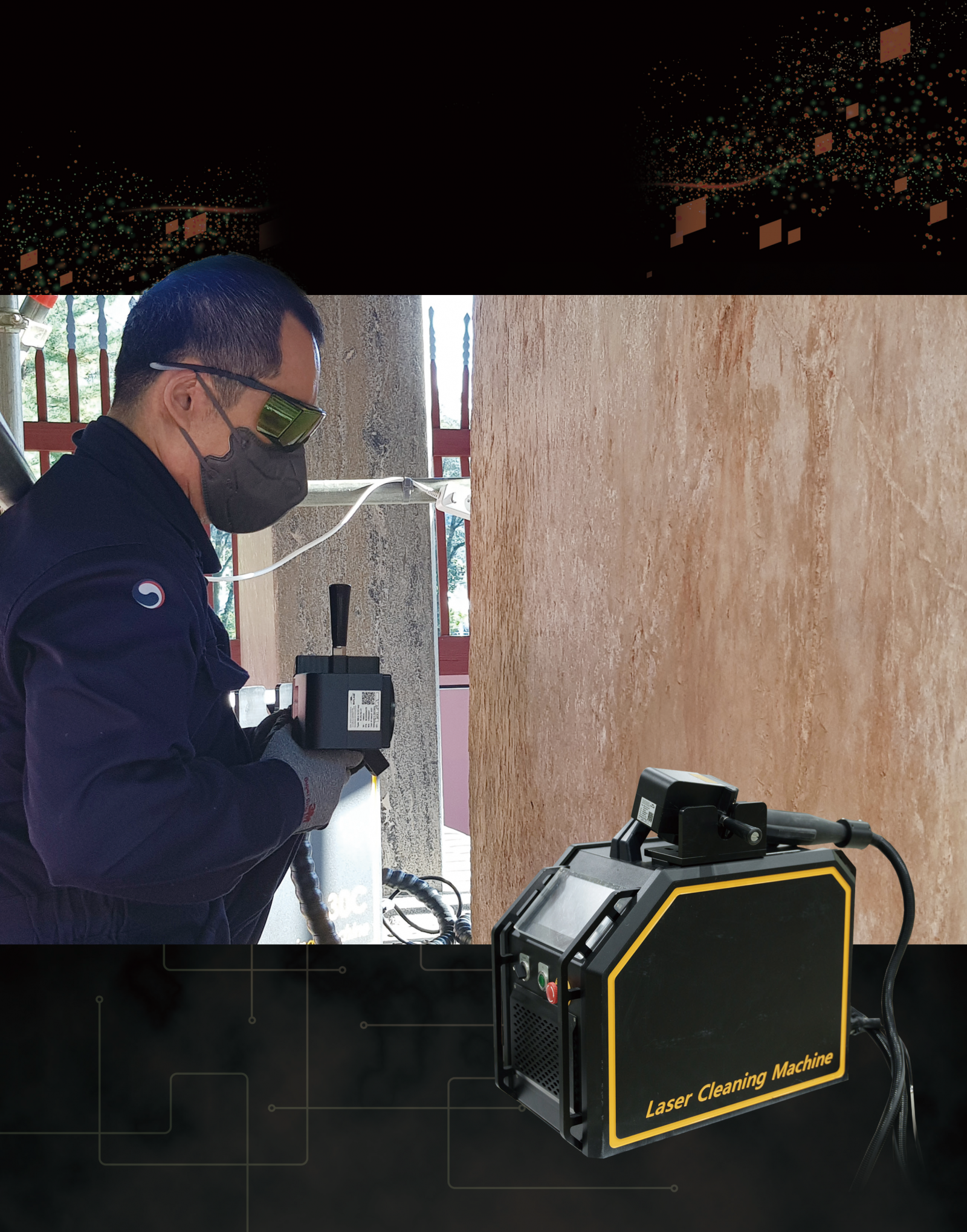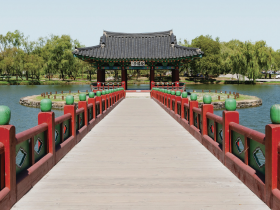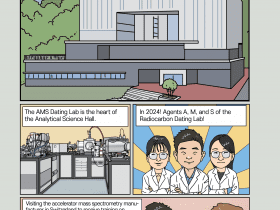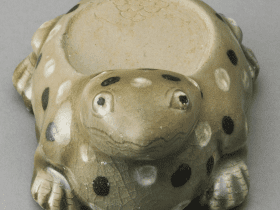In December 2023, as the year drew to a close, Gyeongbokgung Palace’s western gate, Yeongchumun, and surrounding walls were defaced with spray graffiti. During an unusually cold winter, conservation experts from the National Research Institute of Cultural Heritage and the National Palace Museum of Korea toiled to restore the walls of Gyeongbokgung Palace. The surfaces, marred by sprayed graffiti of unknown intent, were ultimately restored through the crucial application of advanced technology.


Korea, known as the “Land of Stone Pagodas,” boasts abundant stone cultural heritage. Every temple features a stone pagoda, and most building walls are made of stone. Despite extensive conservation research, man-made damage like the Gyeongbokgung Palace incident poses greater restoration challenges than natural weathering or environmental variations.
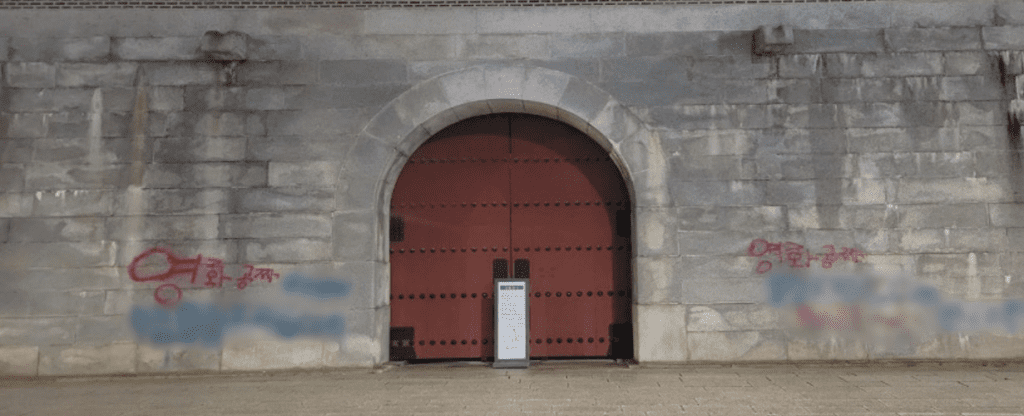



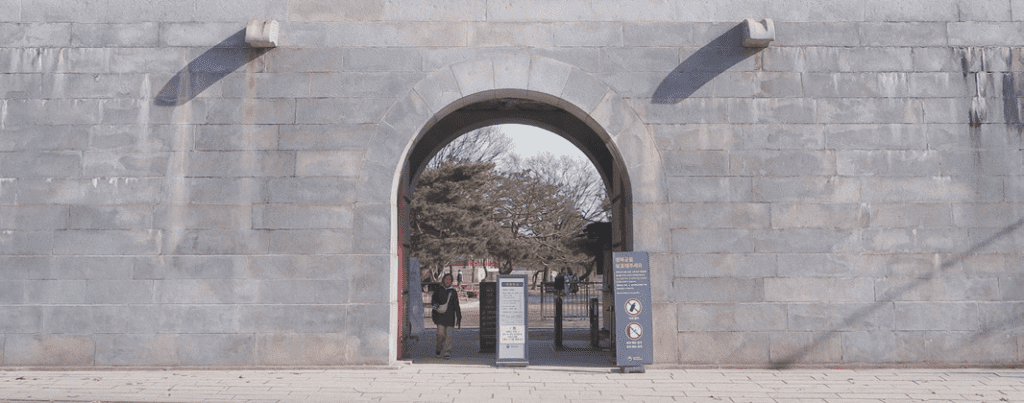

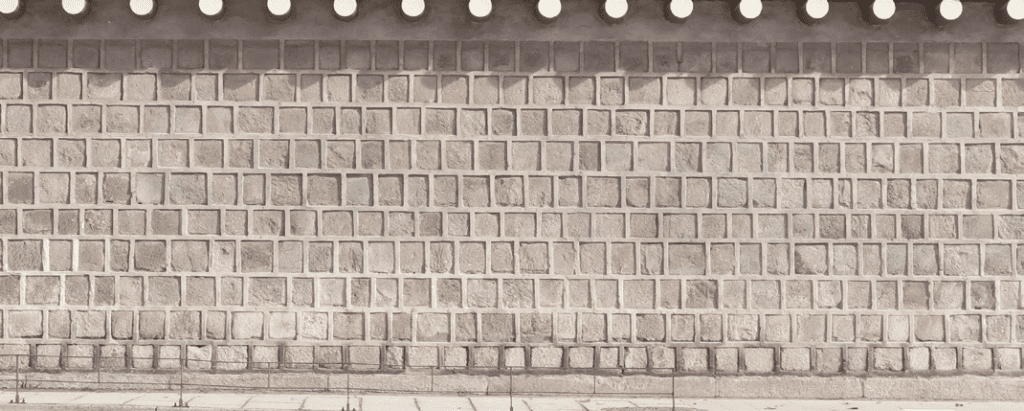

Various Stone Cleaning Methods
All of Gyeongbokgung Palace’s walls connecting gates are made of stone, differing shape and surface by location. Yeongchumun, the primary site of the graffiti incident, was originally built in 1395 (the 4th year of King Taejo’s reign) and rebuilt in 1428 (the 10th year of King Sejong’s reign). It was destroyed during the Japanese invasions of Korea in 1592 and the Japanese colonial rule, but the form preserved today is rectangle and the surface is even, with rock characteristics that makes it relatively easy to restore. However, Two other wall sections damaged by the graffiti, built in 1975 and 2010, were constructed using cube stones. Cube stones, which typically measure approximately 15 to 18 centimeters on each side and were commonly used in palaces or residences of the wealthy, were also used in the wall of Deoksugung Palace. Stone structures with various quality of materials and forms require different cleaning methods based on the specific situation. In general, cleaning methods for stone structures include the following:
For spray contamination incidents like the one at Gyeongbokgung Palace, chemical cleaning is typically attempted first, followed by blasting or laser cleaning methods. However, during the restoration work, consecutive freezing weather below zero temperatures inhibited chemical reactions, and the laser cleaning took a pivotal role under such conditions.
| Cleaning Method | Description |
| Physical cleaning | Removing contaminants by applying physical force to the surface using tools (brushes, dental instruments, surgical blades such as scalpels and etc.) or equipment (air tools, hand drills, etc.) |
| Chemical cleaning | Utilizing chemicals such as alcohol or surfactants to remove contaminants |
| Dry cleaning | Eliminating contaminants using a controlled mix of high to low-pressure air (airbrush) or cleaning tools in a dry condition without the use of water |
| Wet cleaning | Using water (distilled or filtered soft water) and steam, along with cleaning tools and equipment (such as high- pressure cleaning machines), to remove contaminants |
| Steam cleaning | Applying controlled, high or low-pressure hot steam to dislodge and eliminate surface contaminants |
| Low-pressure rotating vortex(Blasting) | Removing surface contamination by mixing fine abrasive particles (such as glass or sand) with precisely controlled air pressure and spraying them onto the surface |
| Laser cleaning | Utilizing the photothermal effect of laser light to selectively target and remove specific contaminants |
| Washing water | Utilizing filtered water specifically for cleaning processes |
Source: Study on Repair Techniques for Stone Cultural Heritage 4, Conservation of Stone Pagodas, National Research Institute of Cultural Heritage, 2018






Laser Cleaning: A Ray of Sunshine
Laser cleaning is a standard non-contact method that employs laser energy to remove contaminants by heating the substrate, leveraging the difference in absorption between the rock and the contaminants. Simply put, the laser’s frequency and wavelength are adjusted to target the contaminants specifically, minimizing Conventional YAG lasers are effective in cleaning but are less efficient and struggle with colors other than black, making it challenging to remove red and blue contaminants. In contrast, fiber lasers offer higher power, adjustable wavelength and frequency settings, and broader capabilities for removing more colors, including red and blue contaminants. When a laser, directed through an optical fiber, encounters a contaminant matched to its frequency and wavelength, it can remove it at a high speed. The granite used in the walls of Gyeongbokgung Palace posed additional challenges due to its varied mineral composition such as transparent quartz and black mica, which could result in either no reaction or potential breakage from disproportionate reaction. During this restoration effort, when faced with these challenges, we prioritized minimizing damage during subsequent cleaning attempts, even if complete cleaning was not achievable.
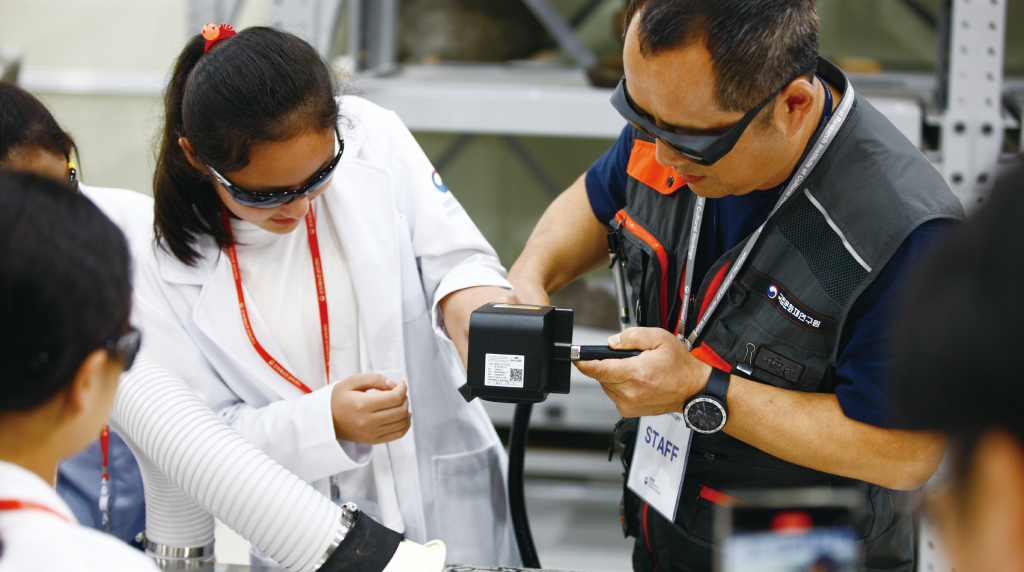

| Classification | YAG Laser | Fiber Laser |
| Medium | Synthetic crystals | Rare earth elements |
| Oscillation Method | Cleaning contaminants using a focused laser beam directed through a mirror | Utilizing optical fiber for continuous laser oscillation and precise mirror penetration upon reaching the target, ensuring highly effective cleaning |
| Emission Method | Single-point focus, which is time-consuming | Continuous emission in a linear form; 90,000 times faster than YAG laser |
Legal Protection of Cultural Heritage
The Cultural Heritage Protection Act imposes severe penalties for damage to cultural heritage. Article 92 stipulates:
The persistence of cultural heritage vandalism incidents, despite the severity of consequences, highlights the need for reflection on our attitudes toward the value of cultural heritage. It serves as a reminder that we should all remain vigilant and endeavor to protect our nationally treasured cultural heritage, as actions driven by momentary curiosity or for fun can result in irreversible damage.

